What greenhouse to buy
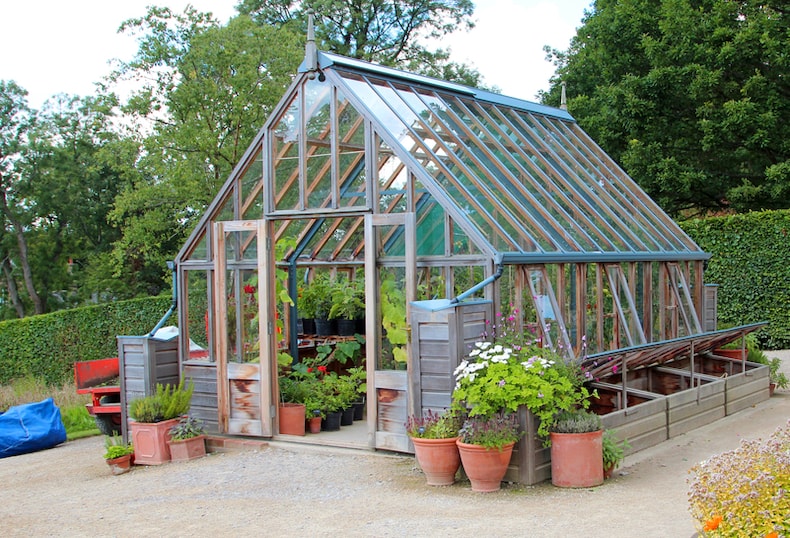
Get the more suitable greenhouse for your space and gardening needs
Image: Jeanie333/Shutterstock
Every serious gardener needs a greenhouse. They provide the perfect growing environment for seedlings and tender plants, and allow you to grow varieties that need more warmth and shelter than is generally available in our climate.
Not sure which greenhouse would be best for your garden? Here’s everything you need to know to make the best choice, starting with a quick list of the things you need to consider:
- Find the best place to put your greenhouse
- Decide what size greenhouse do you need
- Choose the best shape for your greenhouse
- Select the best greenhouse material
- Choose the best glass for your greenhouse
- Make sure you have greenhouse ventilation
- Buy greenhouse accessories and furniture
The best place to put a greenhouse?
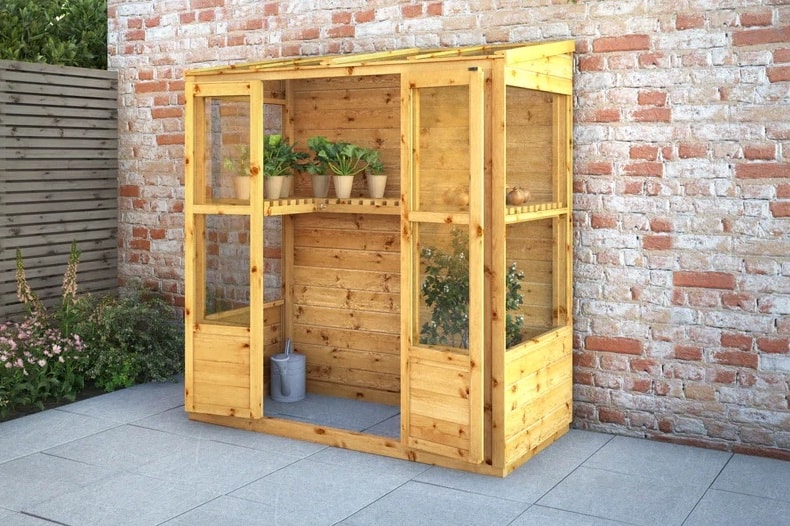
Choose a sunny, sheltered position for your greenhouse
Image: Waltons 6 x 3 Traditional Wooden Tall Wall Victorian Mini Greenhouse Potting Shed from Thompson & Morgan
Before you do anything else, it’s essential to work out where you’re going to site your greenhouse. This will determine how big it can be, and which shape will work best.
Choose a position that’s:
- Sunny - Pick the brightest part of your garden.
- Sheltered - A sheltered spot minimises damage and temperature fluctuations caused by easterly and northerly winds. Avoid overhanging trees which block the sun and can cause damage.
- Flat - All greenhouses need a flat base.
- Accessible - Leave a gap of at least 1m around your greenhouse to make installation and maintenance easier. This also lets more sun in.
- Convenient - Think about how far from the house you’ll want to walk on a miserable day. And, if you want your greenhouse to have heating, lighting and/or running water, find a spot near utilities.
For more advice on location, visit our article on where to position your greenhouse.
What size greenhouse do you need?
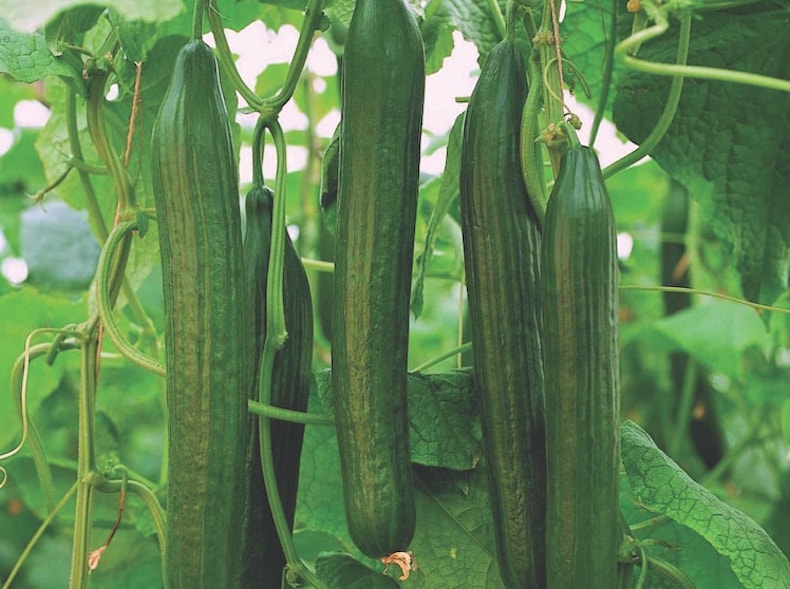
You can grow heat-sensitive vegetables and plants like cucumbers in a greenhouse
Image: Cucumber 'Carmen' F1 Hybrid (Grafted) from Thompson & Morgan
No gardener ever complained about their greenhouse being too big. Choose the biggest greenhouse your site and budget will allow.
Height is an important factor. The higher the roof apex, the more light it will let in. Choose a greenhouse with an apex of at least 5 feet, ideally more.
The best shape for a greenhouse
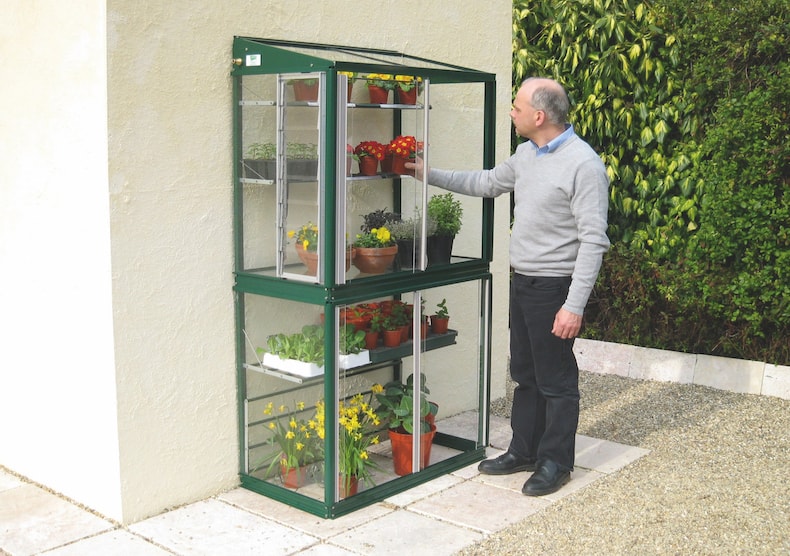
A lean-to greenhouse butts up against an existing wall to save space
Image: Deluxe Hampton Mini Lean-to Greenhouse Racing Green from Thompson & Morgan
Greenhouses traditionally come in three shapes: freestanding apex greenhouses, lean-tos, and octagonal/hexagonal greenhouses.
Here’s how to work out which type is best for you:
- Freestanding – Square or rectangular freestanding greenhouses are great all rounders and can be sited anywhere in your garden. They have an apex roof and allow light in from all four sides.
- Lean-to – Lean-to greenhouses take up less space, butting up to an existing wall of your house or garden. But this can mean that they get less sun than freestanding models.
- Octagonal – Octagonal greenhouses look very stylish when placed centre stage in your garden. They take up more room than traditional freestanding models but also provide a larger growing area.
The best greenhouse material - aluminium or wood?
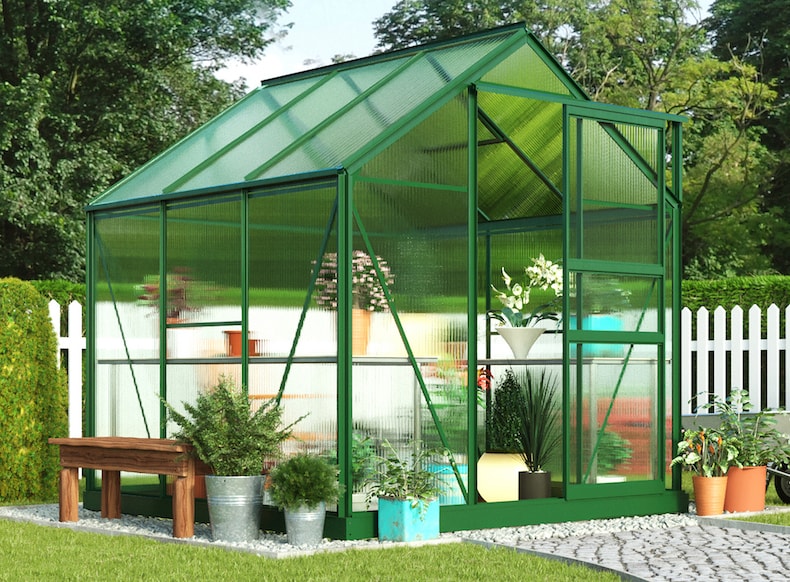
Aluminium greenhouses come in a variety of colours, including black and green
Image: Garden Grow Traditional Greenhouse 6.2 X 6.2 X 6.6ft - Green from Thompson & Morgan
Aluminium and wooden frames have different properties and each has its own benefits:
- Metal frames – Aluminium-framed greenhouses are lightweight and strong. They have a fine structure that lets in more light and casts less shadow. Metal greenhouses come in a range of colours, including green and black, and require little maintenance. But metal is a poor insulator, conducting heat away from the plants inside.
- Wooden frames – Wooden greenhouses are strong, attractive and bring a more natural look to your garden. They tend to have bulkier and more robust frames than metal greenhouses but the wood needs regular maintenance.
The best glass for greenhouses?
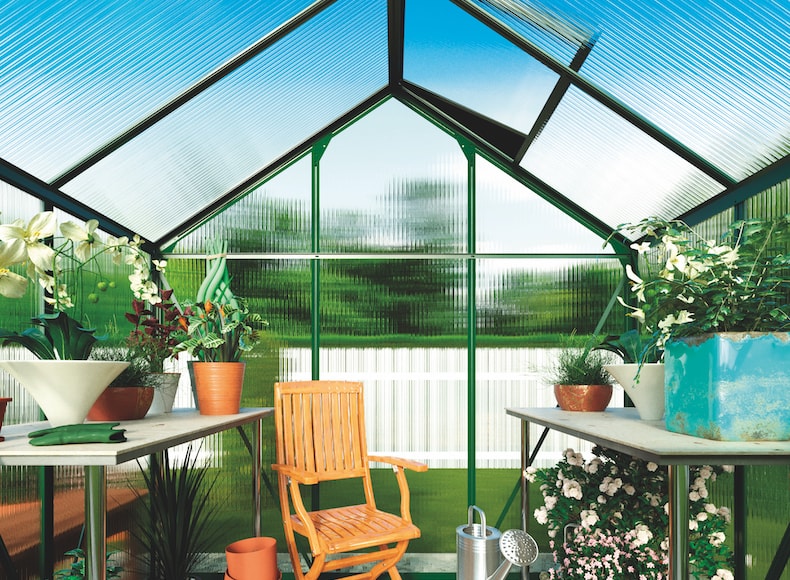
Polycarbonate is 200 times stronger than glass and a better insulator too
Image: Garden Grow Traditional Greenhouse 6.2 X 4.3 X 6.6ft from Thompson & Morgan
There are many different types of glazing available for your greenhouse. Here are the benefits of each:
- Safety glass – Shatterproof safety glass is a safe bet for gardens with children. The glass won’t degrade in UV light.
- Polycarbonate – Polycarbonate is 200 times stronger than glass, weighs half as much and is very safe. It’s also a better insulator than glass and can be UV treated to prevent degradation. However, it’s easy to scratch and the most expensive option.
- Styrene – Styrene is twice as strong as glass, shatterproof, lightweight and a good insulator. It’s the cheapest of the plastic glazing solutions. It isn’t always UV treated, so it may discolour after time.
- Acrylic – Acrylic strikes a happy medium between polycarbonate and styrene. It’s 10 times stronger than glass, can be UV protected, and is priced midway between the other two plastic glazing options.
As well as choosing the type of glazing you want in your greenhouse, you also need to consider whether you want a fully or partially glazed structure:
- Glass to the ground – Greenhouses with glass panels down to ground level let in the most light. Arguably they’re more susceptible to damage at ground level from errant footballs or unruly lawnmowers.
- Half-wall or dwarf wall – Greenhouses with low brick or wooden walls around the base are very sturdy. They also trap more sunshine as heat, keeping plants warmer overnight. However, seedlings will need to be raised up on a bench to get the light they need.
Greenhouse ventilation
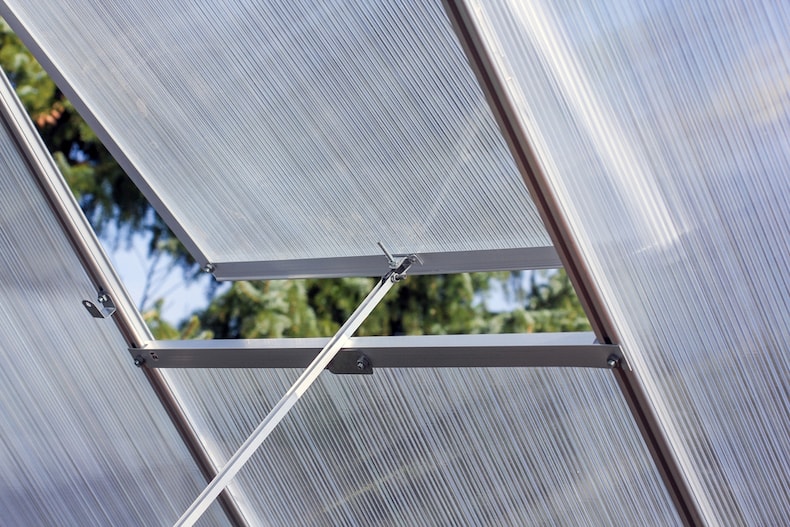
All greenhouses need good ventilation to let excess heat escape
Image: Marina Lohrbach/Shutterstock
All greenhouses need ventilation to allow fresh air to circulate and let excess heat escape so that plants don’t get too hot. Roof vents are vital and ideally should be on both sides of the roof. Some greenhouses also have side vents.
When it comes to ventilating your greenhouse, remember to open doors and vents on hot, sunny days and close them at night to keep your plants warm. You can invest in a good thermometer to keep an eye on the temperature or, better still, install an automatic vent opener that will open and close your vents for you.
Greenhouse furniture and accessories
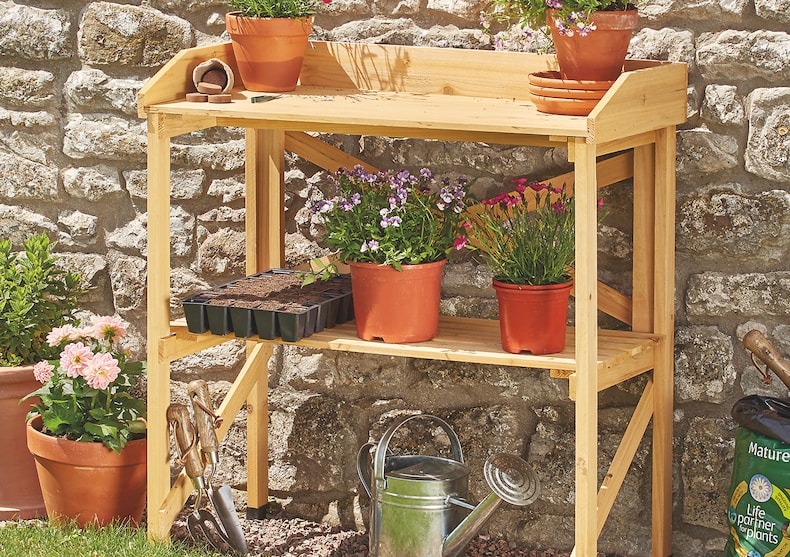
A potting bench takes the backache out of greenhouse work
Image: Garden Grow Wooden Two-Tier Potting Bench from Thompson & Morgan
Once you’ve decided on a greenhouse you’ll need a few basic accessories to get growing.
- Staging – Staging (or shelving) will increase your growing area, allowing you to grow at different levels in your greenhouse. Greenhouse staging is specially designed to withstand greenhouse conditions and allow for adequate drainage and ventilation around plants.
- Potting bench – A potting bench gives you a workspace for all your potting up. Installed at a good height, it will also take the backache out of many greenhouse tasks.
- Water butt - Install a water butt collect rainfall from your greenhouse gutters. If your greenhouse doesn’t have integral gutters you can fit plastic guttering retrospectively.
We hope you’ve found the answers to all your greenhouse-buying questions. To sum up, here are our top tips:
Top tips for choosing the best greenhouse
- Decide where to site your greenhouse.
- Find a sunny, sheltered, convenient spot in your garden.
- Pick the biggest greenhouse your space will allow for.
- Choose the shape and type of greenhouse, depending on your garden.
- Think about which glazing option best suits your garden and budget.
- Make sure your greenhouse has adequate ventilation.
- Order staging and a potting bench.
- Install a water butt to start collecting rainwater.
Sign Up For Exclusive Special Offers




© 2024 Thompson & Morgan. All rights reserved. A division of Branded Garden Products Limited.



